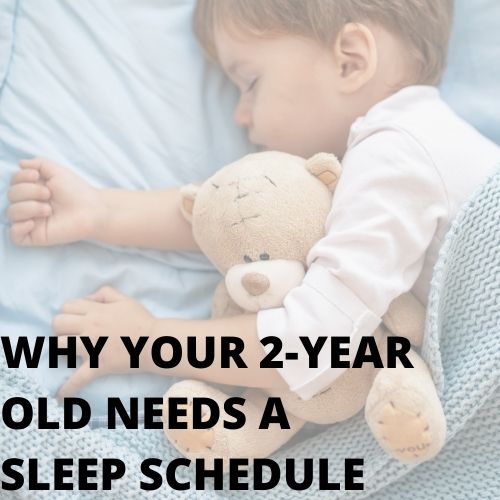Those of us exhausted moms who have spent the first year of our baby’s life in a sleep deprived haze hope that by the time they reach toddler stage, our babies have become perfect sleepers. However, it does not always work out that way. Sometimes we have to look into sleep training for toddlers too.
In this article, we will look at some of the more gentle ways to do sleep training for toddlers.
Most experts will put the toddler years between ages 1 and 3. We can find though that even older than 3 years old, our kids find it hard to fall asleep and stay asleep. Even we can struggle with that sometimes as adults.

Table of Contents
ToggleAt what age should a child put themselves to sleep?
This is difficult to answer because while some kids are naturally able to do it from when they are born, others struggle all the way until puberty.
From as young as 4 months old, different things take place in a child’s life that might cause them to struggle with putting themselves to sleep. Around 3 years old, some toddlers will be able to put themselves to bed too but they may still experience some interruptions that they cannot handle on their own.
From teething to a new sibling coming along to starting school, there are events and experiences that make it difficult for kids to settle easily and by themselves. Sleep training for toddlers might be able to help them do this better regardless of life events but it is important to remember that they might still need help along the way.
Sleep training for toddlers, no matter how gentle or not, is not a cure-all for sleep interruption and sleep problems.
READ: Why your 2 year old needs a sleep schedule
How do I teach my toddler to sleep without crying?
Gentle sleep training methods for toddlers might be your best bet to get them to sleep without a lot of tears involved. Do remember though that even with gentle sleep training methods, if your toddler is getting used to putting themselves to sleep, they might still cry a bit. Try out the following gentle sleep training methods in the link below for your toddler:
These, in my view, are the two most effective forms of gentle sleep training. READ: The 2 best gentle sleep training methods. I go through the PUPD and the chair methods.
You might try these gentle methods of sleep training and find that they are simply not working with your toddler. It is possible that your toddler is not comforted by the methods you have tried or is going through too many changes and is far too excited or stimulated to sleep.
How do I sleep train a difficult toddler?
Many would argue that sleep training is not a ‘thing’. There are some schools of thought that say that it is not possible to teach a baby or child to put themselves to sleep – they do it when they are ready.
If you have tried at least one of the two gentle sleep training methods for toddlers mentioned in the post above and it is not working for your toddler, perhaps it is not the right route for them. Do not label them as ‘difficult’. Rather, make sure that you have put everything else in place to help them to become better sleepers. For some helpful tips on facilitating a toddler’s independent sleep, see the link below.
READ: The 2 year sleep regression. The ‘Ways to address your 2 year old’s sleep regression’ section of this post provides some useful tips on little but important changes you can make to help your toddler sleep better.
It might also be helpful to keep in mind that it is possible that your toddler is one of those who will do what they want to do when they are ready. They will sleep independently and through the night whent they are ready to do so. This period, while you are in it, feels long and exhausting but it will not be this way forever.
If you believe your toddler is truly just being difficult, you might want to consider trying Supernanny’s ‘door shutting’ trick.
Toddler sleep training tips from Supernanny
Supernanny has some suggestions for dealing with difficult toddlers at bedtime. One that I have seen on the website before is the door shutting technique.
You explain to your toddler that their room door will be shut while they should be asleep through the night. When they wake up at night and come to you, you take them back to their bed with no cuddles or conversation and shut the door for 10 seconds. You repeat it each time they leave their room, closing the door for an extra 10 seconds each time. You leave the door open if they stay in their bed so that they know that the door being left open is dependent on them staying in bed.
It will probably take you losing quite a bit of sleep and if your toddler is feeling especially stubborn, there may be some tears. It will almost certainly not feel like a gentle sleep training technique but it may end up being effective.
Supernanny also suggests the Gradual Retreat Programme, keeping a sleep diary and ensuring your toddler gets their naps in.
The door shutting technique might be a little rougher on your parent heart than you would like depending on your kid’s temperament. However, people believe that more gentle sleep training methods for toddlers can also take longer than you would like.

How long does gentle sleep training take?
This depends on your toddler’s temperament and also on what is going on in their lives at the time. No matter what methods you try to help your toddler sleep better, a chaotic environment or big life changes will still affect different aspects of their lives. Their sleep is probably going to be one of them.
Generally, various forms of sleep training can take anywhere from a couple of days to three weeks to become effective.
Do not expect a miracle. Your toddler is a little person who is working their way through new feelings and physical changes – some that they cannot identify or express to you.
Be patient with them and know that you can look back on these sleep deprived days and laugh soon!








